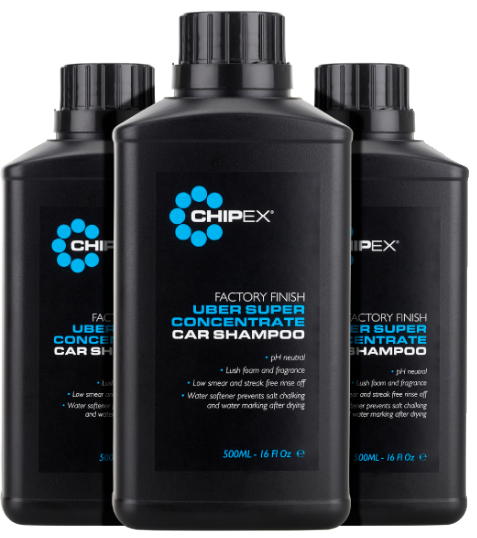It's hard not to dread the moment when you've realised that there's an unsightly ding on your car's paint. The thought of "what and how could this had happened?" rushes through your mind. Even more important, you're now wondering how to fix this. It might only be a matter of cosmetic damage, but it's still unpleasant enough to cause an affliction in your heart.
You tried polishing the scratch or chip in the paintwork... It doesn't work. You search through every cabinet and drawer for a permanent marker or fingernail polish that matches the colour of your car...To no avail. But "aha!", you do have a motorbike, and there is a bottle of paint repair that's very similar. However, is motorcycle touch-up paint really the same as a car's touch-up paint?
Looking Through The Layers
In short, yes, indeed a motorcycle's touch-up paint - and the painting process and compounds as a whole - is similar to that of a car. Thus, you could use your motorcycle's paint repair kit for your car in that aforementioned scenario. Or vice versa, a car's paint touch-up can be used on a motorcycle, without you being able to spot any difference at all, so long as the paint itself matches in colour.
This is since the art of painting a motorcycle and a car is interchangeable, albeit one needs to better distinguish between painting plastic and metal components. Otherwise, the type of paint and how you apply them is no different with either two or four wheels. Generally speaking, the painting application has several layers - or more specifically "coats" - painted on top of one another.
Primer - This is the bottom layer of paint, which goes straight on top of the bodywork, be it metal or plastic. The primer works mainly to create a better adhesion between the body underneath, and the successive coats of paint on top. It makes it easier for paints to stick. Moreover, primer is able to assist in levelling or smoothing out the surface of the body panels. Hence, this irons out any defects and ensures the paint looks nicer once applied. Primer also works to protect the body from damage.
Base Coat - Applied after the primer, the base coat is where the paint's shading and colour, as well as any effects, are found. Essentially, the base coat is how your paintwork can get its hue and vibrancy. Base coats are separated into distinct pigments, each with its own visual flair. Glossy paints are the easiest to apply and most commonly found on cars and motorcycles. Meanwhile, metallic paints are more expensive but have metal or aluminium flakes to make the paint sparkle.
Clear Coat - This is the top-most layer, and sprayed after the base coat has dried. Optionally, there could've been a "mid coat" between the base- and clear coats, if you're choosing a deep and rich tri-colour paint. In all, the clear coat is a transparent layer that finishes off the paint and forms a protective coating. Clear coats are thus made to be highly resistant against abrasion or minor damage, as well as surviving exposure to climate, temperature, and UV light (sunlight).
Some Key Things To Remember
So then, the paint in a car and motorcycle is generally very similar. In fact, some touch-up paint repair kits openly advertise as being able to work on both. The only thing to remember is trying to find one that matches either your four- or two-wheeler vehicle. It can be made a bit easier for some brands. One great example is BMW, which is a popular maker of both cars and bikes.
A few of its paint options between both vehicles are shared, or at the very least, quite similar. For instance, 'dunkelblau' - or dark blue, is more or less the same on either a BMW motorcycle or a car for a darkish blue colour. If you happen to have a paint touch-up bottle or pen for your dark blue BMW bike, then it could very well match nicely with your dark blue BMW car.
There is, in addition, one other important caveat to consider - flex agent, or flex additive. Flex additive is a chemical compound that you'd normally mix in the primer, or sometimes the upper layer of the clear coat. As the name suggests, a flex agent helps the paint to flex or bend without the now-hardened paintwork cracking. It's worth noting that some motorcycle parts are quite bendy.
This is especially so with the plastic bodywork and panels around the fenders or along the side. All of which can bend around under pressure, although this is ordinary. A car's bodywork doesn't do this to an extreme degree, which is why paints on a motorbike can sometimes have flex agent. The thicker the coats of paint you apply, the more likely it is to crack when the bodywork flexes.
Nonetheless, paint technology has moved on quite a bit. As a result, even basic types of paint these days don't crack easily when the surfaces under it are flexing. So, you wouldn't have to be concerned about this too badly. Plus, if you're using touch-up paint only for only a small area like a thin scratch or a tiny stone chip, then the thought of flex additive isn't something you ought to worry about.
Conclusion
In summary, you can indeed use motorcycle touch-up paint for your car, and vice versa. Although we'd still recommend getting a proper touch-up repair solution to better match your exact vehicle, it could be interchanged in a pinch, or if you can't find the specific one for your car or motorcycle. At the end of the day, whether or not the colour matches is the only thing you need to think over.
Find Your Car's Paint Colour
- Choosing a selection results in a full page refresh.
- Press the space key then arrow keys to make a selection.

